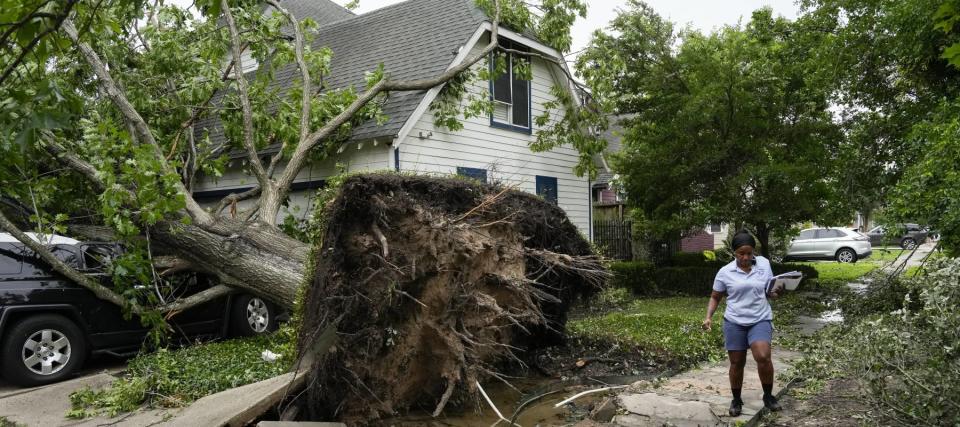Almost 20% of US adults say they can't afford an emergency expense over $100 — 3 ways to boost your emergency fund

Everything is expensive these days: housing, groceries, and utilities all cost more than they did in years past.
Sometimes, on top of all the necessary bills we have to pay, emergencies expenses such as an unexpected car repair or a surprise medical bill can pop up.
Don't miss
Cost-of-living in America is still out of control — use these 3 'real assets' to protect your wealth today, no matter what the US Fed does or says
Car insurance rates have spiked in the US to a stunning $2,150/year — but you can be smarter than that. Here's how you can save yourself as much as $820 annually in minutes (it's 100% free)
These 5 magic money moves will boost you up America's net worth ladder in 2024 — and you can complete each step within minutes. Here's how
However, according to the Federal Reserve, many U.S. adults aren’t able to pay for an emergency expense (not good).
The Federal Reserve’s Report on the Economic Well-Being of U.S. Households in 2023, which draws from the Board's 11th annual Survey of Household Economics and Decisionmaking (SHED), takes a closer look at the financial lives of U.S. adults and their families. More than 11,000 adults were surveyed in October 2023. The results? Very concerning.
Of all U.S. adults surveyed, 18% said the largest emergency expense they could handle right now using only savings was under $100. What’s even scarier? Only 14% said they could handle an expense of $100 to $499 and only 10% said they could handle an expense of $500 to $999.
Some adults can’t pay an emergency expense at all
If the statistics above scare you, hold on because it gets worse.
To further put this all into perspective, only 63% of U.S. adults could cover a $400 emergency expense completely using “cash or its equivalent” (meaning that you pay using cash, savings or a credit card paid off at the next statement date).
Of the remaining 37% of adults, 13% of all adults said they would be unable to pay the expense by any means. This statistic is unchanged from 2022 but represents a shocking 11% increase from 2021.
If you fall into this group, you could be forced to assume debt to pay for emergency expenses. This is never a good thing and can seriously wreak total havoc on your finances.
Fortunately, there are a number of effective ways to boost your emergency funds so you don’t put yourself into debt over surprise expenses.
Read more: Thanks to Jeff Bezos, you can now use $100 to cash in on prime real estate — without the headache of being a landlord. Here's how
3 ways to boost your emergency fund
Here are three tips and tricks to boost your emergency fund so you can be prepared for an emergency expense of $100 or more:
1. Eliminate unnecessary expenses. If you’re lacking sufficient emergency savings, the first step is to cut out unnecessary expenses. For example, don’t go out to eat as often, consider getting rid of cable TV, cancel any unused streaming services, and skip your morning cup of coffee from the cafe. Little lifestyle changes and small sacrifices can put cash back in your bank account each month.
2. Set up automatic deposits to a high-yield savings account. An easy way to grow your money is to set up automatic deposits to a high-yield savings account. These accounts pay higher interest than savings accounts at traditional brick and mortar banks and offer a virtually risk free way to grow your money.
Consider setting automatic cash deposits from your checking account that align with your payday. This way, you won’t even feel the difference and your savings will grow automatically. Be sure to put in whatever you can afford, even if it’s just $50 per month.
3. Take up a side gig to earn extra cash. If you want to accelerate the growth of your emergency fund, think about taking on a side gig outside of your 9-to-5 job. You can become a rideshare driver, food delivery worker, babysitter, or even become a dog walker. Adding a second revenue stream is a surefire way to accelerate your financial growth and prepare you for life’s surprises.
What to read next
Car insurance premiums in America are through the roof — and only getting worse. But 5 minutes could have you paying as little as $29/month
‘Baby boomers bust': Robert Kiyosaki warns that older Americans will get crushed in the 'biggest bubble in history' — 3 shockproof assets for instant insurance now
‘You didn’t want to risk it’: 80-year-old woman from South Carolina is looking for the safest place for her family’s $250,000 savings. Here's Dave Ramsey's response
This article provides information only and should not be construed as advice. It is provided without warranty of any kind.

 Yahoo Finance
Yahoo Finance 